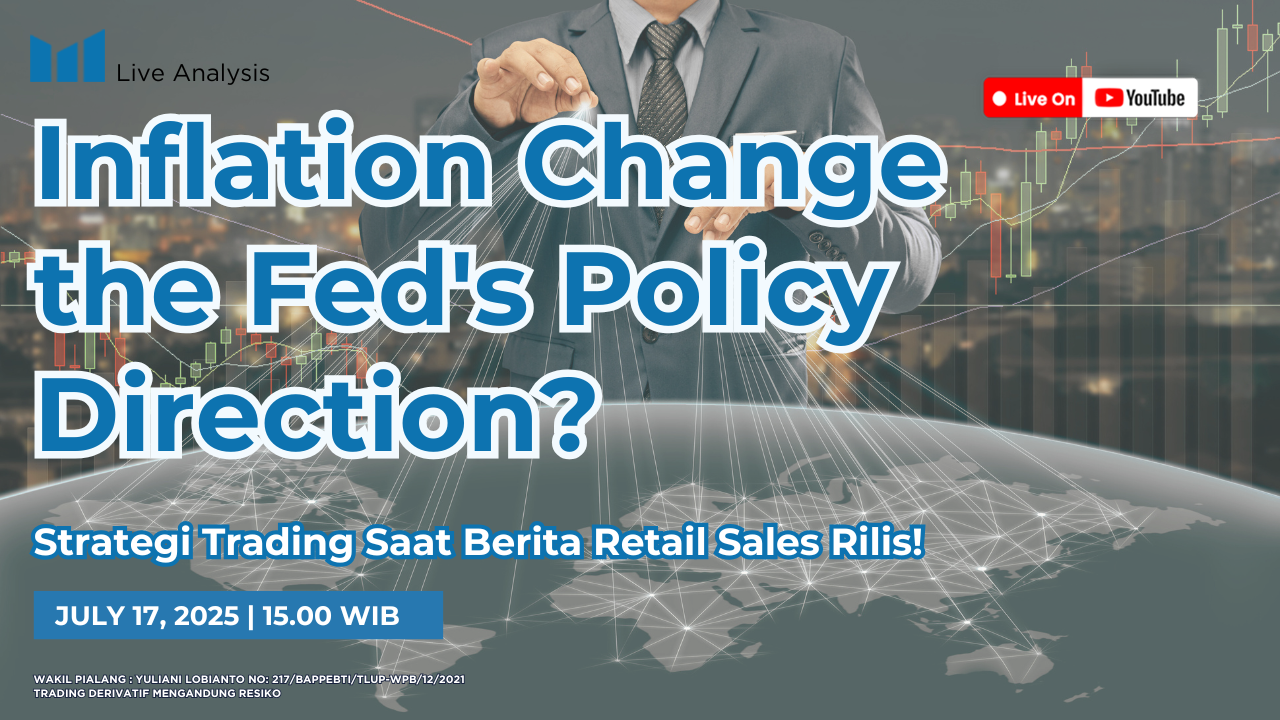As we enter the second half of 2025, the U.S. financial markets continue to experience high volatility driven by policy pressures, inflation, and broader macroeconomic uncertainty. One of the main triggers of this instability is the rumor surrounding the potential dismissal of Federal Reserve Chair Jerome Powell by President Donald Trump. Although the claim has been denied, the mere suggestion has raised concerns that monetary policy could become increasingly politicized, potentially undermining long-term market stability.
In addition to political risks, economic pressures have intensified due to rising production costs driven by import tariffs. Recent data shows a slowdown in producer price inflation (PPI), but wholesale goods are beginning to reflect tariff-related costs—signaling that the burden is gradually seeping into the supply chain. If this continues, it may eventually be passed on to consumers in the form of higher retail prices.
Consumers at a Tipping Point
Retail sales data rose just 0.1% in June (after contracting 0.9% in May), raising fresh concerns about consumer spending power. With consumption contributing more than 68% of U.S. GDP, any sustained weakness in this sector could signal mounting recessionary risks.
The market reaction has been mixed. On the one hand, the U.S. dollar (USD) continues to be the global safe-haven of choice amid uncertainty. On the other hand, gold (XAU/USD) has shown modest gains due to increased demand for hedging, although its rally remains limited by rising real yields and the strength of the U.S. dollar index.
It’s Not About Being Right—It’s About Surviving
In such conditions, what investors need most is not necessarily perfect analysis, but the ability to survive the unpredictable nature of the markets. As stated by Mr. Ade Yunus (Research & Development, Maxco Futures):
“Trading isn’t about making the right analysis, but about how we can stay in the market. Manage risk and manage capital.”
This emphasizes the importance of risk management and disciplined investing. Markets may swing wildly due to rumors, policies, or surprising macroeconomic data. However, with proper risk control and sound capital planning, investors can still uncover opportunities amid the chaos.
Conclusion: Are You Ready for the Volatility?
At this moment, the direction of the market hinges heavily on key economic indicators such as inflation and retail sales, as well as the Federal Reserve’s interest rate policy. Investors should closely monitor each data release and adjust expectations accordingly. More importantly, it is the ability to endure and adapt that will ultimately determine success in navigating global economic volatility.
source: https://www.youtube.com/watch?v=lrCKHnz1ujg
